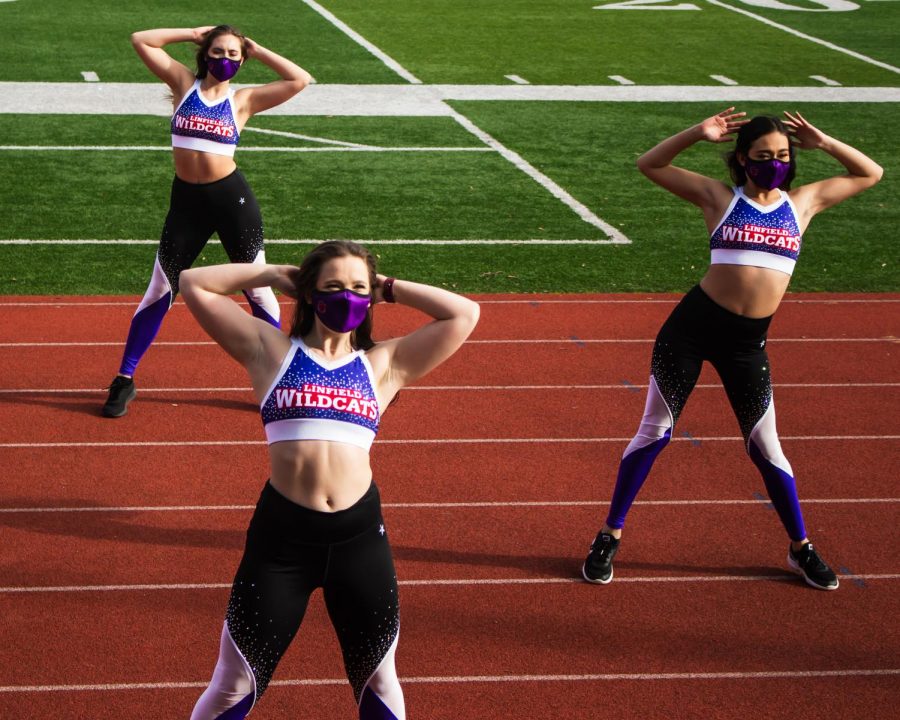Dance is a sport despite archaic definitions
March 24, 2021
Practices for six hours a week, individual strength training, and maintaining school and sport. Sounds like the average college student athlete, right? Well, unfortunately for the Linfield dance team and other collegiate dance teams across the states, this label doesn’t apply.
Dance should be considered a sport not only by spectators but also by the NCAA.
According to the NCAA website, a sport is “an institutional activity, sponsored at the varsity or club level, involving physical exertion for the purpose of competition against teams or individuals within an intercollegiate competition structure.”
The organization further defines that a sport must, “operate under standardized rules with rating/scoring systems ratified by at least one official regulatory agency and/or governing body.”
Although dance checks the boxes of a “sport,” it doesn’t fulfill it completely because dance teams don’t regularly compete, if at all, therefore falling short of being deemed a real sport.
“I think one reason people don’t view dance as a sport is because it can be seen as too ‘graceful,’ and can look easier than it actually is,” said Linfield dance team co-captain Elizabeth Thompson. “Dancing requires a lot of coordination, technique and core strength. Three things that athletes can benefit greatly from to contribute to their sport.”
Gymnastics is similar to dance in that way. However, it has been an NCAA recognized sport since 1981 and an Olympic event as of 1896. This sport showcases an athlete’s tumbling skills and artistry, especially for the renowned floor exercise that combines dance and flips.
Since dance isn’t acknowledged by the NCAA like gymnastics, it devalorises dance as a sport when athletes with similar skills are noticed for their athleticism while dance is ignored. Without official recognition, dance teams don’t have access to athletic funds like other sports even if they put in the same amount of work.
Beyond the ability to pay for specialized camps or collegiate tournaments like the Universal Dance Association where teams from all divisions compete, dance teams can’t tap in to athletic department funds that could help programs work to become profitable for their institutions.
Instead, dance teams must fundraise individually like redeeming bottles or soliciting donations for example, in lieu of accessing money pools meant to compensate coaches and ensure safe practices during the pandemic. For instance, Linfield athletics raised $165,000 in 2020 by partnering with the advancement office to solicit money from donors and alumni through email, mail and phone call communications.
On top of a lack of financial resources, there’s logistical disparities that hold dance teams back from becoming a sport.
“In order for dance to be taken more seriously as a sport, dance needs to be treated with the same opportunities and resources as other sports teams,” Linfield dance team co-captain Leah Thompson said.
This includes but is not limited to regular access to sports facilities, cameras for filming and equal opportunities for practice time. Other athletes don’t think twice about any of these details because they’re taken care of by coaches or athletic coordinators. For the Linfield dance team, students fill these roles. Why?
The answer is as simple as how people see dance: it’s not technically a sport.
It’s a cyclic problem; the lack of funding leads to dance becoming less accessible, less dancers means smaller programs and less interest. On top of that, schools emphasize game day appearances which takes away from time spent on collegiate competitions and, without consistent competitions, dance teams can’t be considered a sport by the NCAA.
Although dance is different than most sports, it doesn’t mean it should be left out of the conversation. I do recognize, however, that dance tends to be caught in the gray area between art and athletics.
Since dancers don’t go physically head-to-head in competition and aren’t unpredictable like the outcome of a football game, fans don’t experience as much adrenaline while watching.
Dance is able to showcase athletic performance and entertainment spectacle. But, at the root of it, collegiate dance teams lose value towards being considered a sport when they’re placed as accessories for games and secondary mascots for their schools.
What people fail to realize is that the average college football or basketball game wouldn’t be the same without other moving pieces like dance or cheer. If you remove them, you’re left with unorganized screams from fans and athletes who can only be enjoyed at a distance.
On top of not being recognized nationally or institutionally, dance doesn’t get air time like gymnastics, for instance. Gymnastics tournaments are regularly scheduled on TV allowing fans to indulge beyond the Olympics, unlike dance, which is streamed through reality shows (e.g. Dance Moms or Dancing With the Stars), stripping dance’s credibility of being a sport.
“One of the reasons people don’t view dance as a sport may be because it’s mainly about performing rather than competing,” Thompson said.
Although dance is performance based, so are internationally recognized sports like gymnastics and ice skating which combine show and athletic ability. Further, the accreditation of breakdancing as an Olympic sport starting in 2024 proves that dance has athletic valor that engages a wide audience.
Although dance doesn’t have the same chance as other sports who have consistently scheduled games, dancers deserve the same recognition and opportunities as any sport.
Behind the smiling faces and perfect techniques are students who are tired of trying to prove to fans and the NCAA that what they do matters. Instead of being fixated on the definition of sport or comparing dance to sports that keep scores, people need to see it individually.
Dance is different, but that shouldn’t eliminate its value or recognition as a sport.

